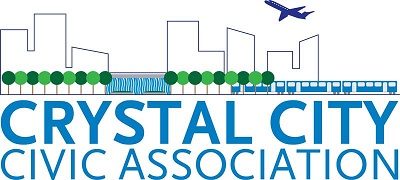Download the Newsletter here. 1. Message from Your President: A big thank you to everyone who made January’s Meeting a success! We had a presentation by VDOT on the proposed changes to Route 1. Then a discussion panel with Carol Fuller, Pam Van Hine, and Arthur Fox, led by Brian Harner….
Category: County
CCCA Meeting January 19 on Route 1
The focus of the meeting was on Route 1. The CCCA slide show is here. We invited VDOT to provide an update on the study of Route 1 and their recommendation for Option 3 to bring it completely down to grade–an option that Livability22202 and the CCCA believe is inadequate…
January 2022 Newsletter
HAPPY NEW YEAR 2022! Download the Newsletter here. Save the Date for the Next CCCA Meeting: January 19, 7-9 pm We plan to devote most of the meeting to updates on Route 1. VDOT’s Senior Project Manager Dan Reinhard will provide an updated timeline for Phase 2 and a Livability22202…
November 2021 Newsletter
Click here to download the Newsletter Save the Date: November 17 Annual CCCA General Meeting, 7-9 pmOur agenda includes: 1) Election of new officers;2) Vote on ByLaws Amendment;3) presentation by Amazon on its operations in 22202 and its plans for PenPlace; and4) conversation with Virginia Representative (48th district) Rip Sullivan (who covers…
CCCA October 2021 Newsletter
Click here to download.https://www.crystalcitycivic.org/wp-content/uploads/2021/10/CCCA_Newsletter-No.-10.pdf Some Highlights: 1. Save the Date: CCCA Annual Meeting, November 17, 7-9 pm. So far, we’ve confirmed that we will have our annual CCCA elections and a presentation by Amazon on its operations in 22202 and its plans for PenPlace. Stay tuned for details in early November…
Livability22202 Route 1 Working Group Rejects VDOT Study
After 10 months of study and public meetings, VDOT released its feasibility report on Route 1 at the final Public Information Meeting June 16. No surprise: the recommendation is to bring Route 1 down to grade. The Livability Working Group released a press release on June 27. Read the full text…
Livability22202 Update on Schools and Day Care
Update June 23, 2021: The 3 civic associations sent a letter June 23 prepared by the Schools Working Group to the County Board voicing support for the Board’s attention to development of a plan for the creation of more K-12 seats in 22202. It calls for the County to conduct focused engagement with…
Alternatives to Calling the Police
SURJ NoVa (https://www.surjnova.org/) and the Crystal City Civic Association co-hosted a webinar on alternatives to calling the police on Sunday afternoon, April 25. The presentation, breakouts, and discussion were thought-provoking and intense. For many participants, realizing the implications of calling the police were a revelation and something to consider when…
May Newsletter is Out
Well, those who responded to our survey on the Newsletter indicated that they want the Newsletter to be as long as necessary to cover the news—so I guess 14 pages is ok! The highest votes for what to include were the Timeline of Meetings and Development, followed by CCCA, Livability…
Livability22202 Meeting on County Planning and Affordable Housing
Good meeting February 9 of the three 22202 civic associations: Arlington Ridge, Aurora Highlands, and Crystal City. 7:00 pm: Matt Mattauszek, Arlington County Master Planner, Crystal City/Pentagon City Planning Coordinator, provided a detailed overview of the county planning activities for 2021 in 22202. The year will be very busy as…
